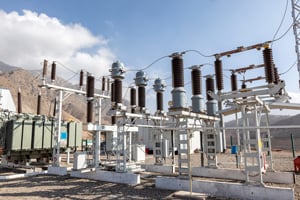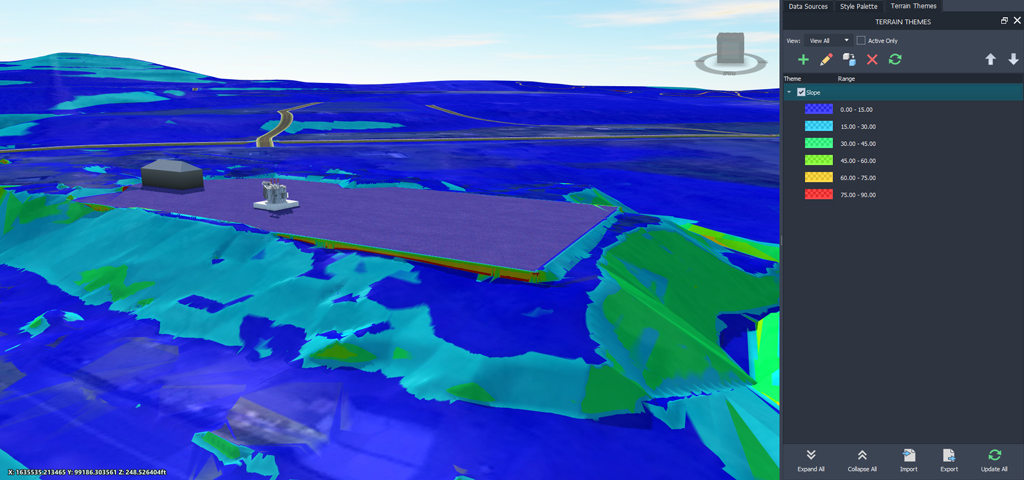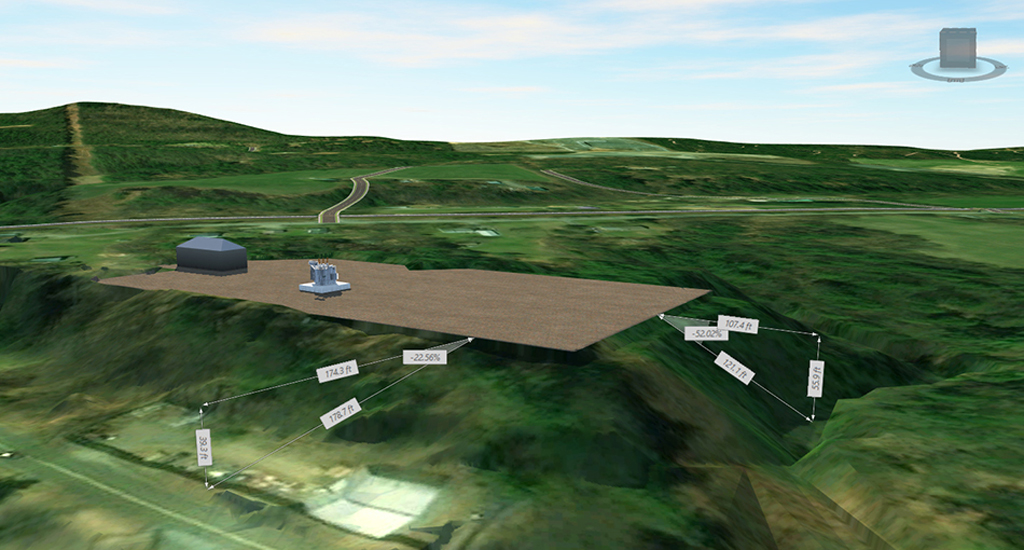Forward-thinking insights focused on a more sustainable tomorrow.
Sustainable Substation Design: A Model-Based Design Approach Enhances Sustainability
To combat climate change and build a more sustainable future, the Federal Government has goals of reaching net zero emissions economy-wide by 2050 as part of the rejoined Paris Agreement, and reaching zero-carbon electricity by 2035. Many utilities are supporting these initiatives by publishing their own climate goals and some states have established related climate targets. There is a real opportunity for power investment to support these emission reductions and positively impact the places where we live, work, and play.
Electrical substations will play a critical role in the power grid’s transition to clean energy by supporting generation mix changes, along with the related transmission line network upgrades. Substation design and construction practices can positively affect sustainability by using natural materials, considering waste streams, and specifying low embodied carbon materials. VHB’s project development process, using model-based design, allows for a broader assessment of a substation’s sustainability priorities, spurring innovative solutions that achieve consensus and elevate clean energy in our communities.
Implementing a model-based design during the early conceptual phase of an electrical substation project development is an inherently sustainable and technology-enabled approach with significant benefits to both energy clients and our communities. Applying a sustainable lens to model-based substation design reveals benefits in social, environmental, and economic focus areas.
-

Electronic Substations
Electronic Substations dot out landscape and play a vital role within the electric grid by connecting power gerneration, transmission, and distribution. Simnply put, they transform coltage while providing circuit switching and interupting capabilities.
-

Model-Based Design
Model-based design utilizes embedded and dynamically linked data within a computer-aided 3D drafting program to facilate civil site design and analysis. The use of model-based design for civil layout alternative evaluation results in superior what-if model assessments where constraints and issues may be readily identified, evaluated, and conveyed to the client and other stakeholders. This may be done in real-time, which allows for a streamlined buy-in progression.
Social
Understanding and meeting community expectations are a critical part of the substation design and permitting process. Model-based design produces enhanced and accurate renderings for community outreach and buy-in. The design choices that are evaluated and documented during the design process provide improved aesthetic and character impact mitigation. Sharing model-based design images during public engagement meetings helps to convey ideas and achieve stakeholder consensus.

Environmental
Model-based design allows substation project teams to make smarter choices based on data. For example, reducing the dimensions of concrete structures such as retaining walls lowers the embodied carbon of the substation (the amount of greenhouse gases emitted to manufacture the materials that are consumed to build an asset). Less material in this case means less emissions related to manufacturing concrete and steel reinforcements, as well as the transportation and process emissions from delivering material to the site and erecting the additional wall. A reduction in materials by either reducing or eliminating concrete retaining walls can significantly lessen the carbon footprint of constructing the asset.
Another example of sustainable solutions is through optimizing cut-and-fill to reduce the excavated materials transported off-site or new fill imported to the site. As the grading of the site is optimized and fixed structures like a perimeter wall are conceptualized, the team can then move around the model and develop ways to re-establish natural habitats or add stormwater management features.
Case Study

VHB utilized model-based design to collaborate with an energy client to identify the optimal layout for a proposed substation expansion during the conceptual phase of the project. During initial public outreach forums, a pledge was made to the neighborhood and surrounding community to limit the overall disturbance to the greatest extent practical to minimize impacts to the abutting neighbors. To achieve minimal ground disturbance, it was assumed that a retaining wall would be proposed along the edge of the substation expansion to limit grading and the removal of existing vegetation.
After developing a 3D model of the proposed expansion, VHB was able to demonstrate to the client that a shorter, less extensive retaining wall would not only significantly reduce project cost but would also better complement the landscape and characteristics of the existing neighborhood. While this concept did have more ground disturbance than the maximum wall concept, it was significantly less than the agreed–to total disturbance. Additionally, native plants could be utilized to vegetate temporarily disturbed areas, again resulting in a more sustainable concept that complements the fabric of the surrounding neighborhood.
Economic
3D models of substations reveal what is required versus what may be reduced, relocated, or eliminated—and that benefits the bottom line in more ways than one. Purchasing less material results in reduced costs in the manufacturing of material or shipping and handling. Significant savings in construction costs can ultimately reduce the rate or cost of electricity for the end user.
Future-focused design and construction choices like introducing vegetated slopes and reducing wall height make for a more resilient structure that will not need to be rebuilt, replaced, or serviced as often, further reducing operations and maintenance costs. Finally, a model-based design reduces risk and improves accuracy because calculations and constraints are backchecked in real-time, enhancing the quality control process and reducing costs due to rework or other corrective actions.
How VHB Can Help
VHB is helping clients implement safe, reliable, and future-focused energy solutions. We are enthusiastic about the model-based design approach and its sustainable benefits because it mirrors the holistic, integrated solutions approach we apply to all our projects. Sustainability permeates our culture, our practices, and our work. Applying new technologies enhances our approach to engineering electrical grid components in safe, sustainable ways and is critical for the health of our communities, our environment, and our economy. Are you faced with planning and design challenges associated with electrical substations? Contact Jeff Goldberg or Ryan Prime today to start planning a more sustainable tomorrow.




